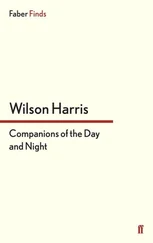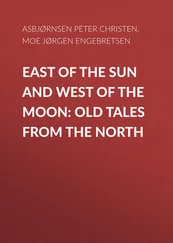Scholars have long considered Josephus a mere copyist, who passed on materials transmitted to him without changing much. Recent studies including literary analysis have revealed that Josephus was a historian with a complex agenda of his own. He was a Jewish author who had contemporary interests, both personal and collective. The local elite in Flavian Rome interested in Jewish culture must have been prominent among his targeted readers, including the wealthy freedman Epaphroditus, who was his literary patron ( AJ 1.8; Vita 430; Apion 1.1; 2.1, 296; Mason 1998, 2003b, 2005, 2011; den Hollander 2014). Some of his Roman readers may have been Jews, especially those connected with the Herodian family (Goodman 1994; den Hollander 2014: 263–279). Because Josephus was a participant ( BJ 1.3), he claims special knowledge of the war between the Jews and the Romans in 66–70 CE, which ultimately led to the destruction of the Jerusalem temple. He also claims to know that the course of events had God’s approval and that the Jews, therefore, had to accept Roman rule. The dramatic story of the defense and capture of the city of Iotapata (reported in book 3 of The Jewish War ), during which Josephus surrendered to the Romans, proves this point. Josephus as a character in this story attests that the Romans had to win the war because God supported them. His surrender proved that he was a servant of God and not a traitor ( BJ 3.354).
This contribution focuses on some aspects of Josephus’s significance as a source for the history of the Near East in the Hellenistic and Roman periods. I will start with briefly discussing the content of Josephus’s four works. The subsequent sections deal with the relevance of these works for the history of the Jews in Judaea and other territories controlled by a Jewish ruler, Josephus’s geographic information, the picture of so-called friendly kings that arises from his work, and finally, some of the passages about Diaspora Jews and other nations that figure prominently in Josephus.
Josephus is a very important source for the history of the Jews in the Near East in the Hellenistic and Early Roman periods (surveys: Schürer 1973–87; Grabbe 2004–2020). A History of the Jews and Judaism in the Second Temple Period I-III. London (66–73/74 CE; references in Popovic 2011; Mason 2016a), which he introduces as the biggest war ever ( BJ 1.1; cf. Thucydides 1.1; Marincola 1997: 17, 198–199; Rajak 1998: 223). The themes and key words introduced in the prologue indicate that rebellion ( stasis , 1.10, 25, 27), banditry (1.11), and internal corruption are recurring issues in this history, which point to Josephus’s interpretation of the events that foremost radical Jews were to blame for the war and that the Jewish defeat was the rightful punishment by God (see, e.g., 6.110, 250, 288). Internal conflicts and the tyrannical behavior of Jewish leaders brought about the intervention of the Romans, with its devastating outcome (1.10, 11, 24, 27–28). Josephus aims at a precise report in War (1.3) and introduces himself as “a Hebrew by birth and a priest from Jerusalem.” In this way he not only claims to have expert knowledge as a participant and later as an onlooker ( BJ 1.3; Marincola 1997: 134–136; Chapman 2005: 290), but he also points to his personal sufferings and announces that he will lament the calamities that befell his fatherland (1.9; also 1.11–12; Swoboda 2014: 238, 417–426; also Lindner 1972: 132–141; Mader 2000: 2–4; Price 2005: 110).
Josephus offers an extensive pre-history of the war against the Romans, which is narrated in books 1 and 2 (2.1–292) and already highlighted in the prologue (1.18), where he summarizes the events told in the main narrative (1.19–30) and also signals that his history will focus on Jerusalem with the temple as central location. The first event mentioned concerns the Seleucid King Antiochus IV’s capture of Jerusalem (168/167 BCE; BJ 1.19), which also anticipates that Jerusalem is the focal point of the conflict with the Romans.
The prologue to The Jewish Antiquities , Josephus’s most elaborate work, which is usually dated in 93–94 CE (following Josephus’s reference in AJ 20.267 to the present time as the 13th year of Domitian, which equals Josephus’s 56th year; Mason 2001: xv–xvi), makes four points ( AJ 1.5) by indicating that this writing: 1) is aimed at all the Greeks ( Hellēnes , i.e. non-Jews, see also 1.9); 2) concerns “our entire ancient history” ( hapasan tēn par’hēmin archaiologian ; cf. AJ 20.259, 267; Vita 430; Apion 1.54, 127; 2.136, 287); 3) as well as the arrangement of the Jews’ political constitution ( politeuma ); 4) in the form of a translation from the Hebrew Scriptures. The first point implies that the audience aimed for in the Antiquities consists primarily of non-Jews, in particular the contemporary cultural elite in Rome (Mason 1998, 2003b, 2005; den Hollander 2014: 279–286). The reference to the local wealthy freedman Epaphroditus as Josephus’s patron ( AJ 1.8–9; also Vita 430; Apion 1.1; 2.1, 296), who is characterized as a lover of every kind of culture (1.8), supports this configuration of Josephus’s main audience. The key word archaiologia (“Antiquities”; Rajak 1982: “Archaeology”; Mason 2000: xxiii: “Judaean Ancient Lore”; 1.5) implies a history from ancient times onward, starting, in fact, with the creation of the world (1.21, 26, 27). This implies that the history of the Jews is as old as the history of humankind. In Against Apion Josephus presents the content of Antiquities as follows: it is based on the Sacred Scriptures of the Jews, it concerns the origin of the Jewish people, its original composition and the land possessed currently, and comprises a history of 5000 years ( Apion 1.1; cf. AJ 20.259–261). The Jewish laws and the political organization of the Jews are central topics in this history (Schwartz 1983–1984; Feldman 1998: 144–148; Swoboda 2014: 469–470). The laws are divine and revealed by Moses (briefly explained in 1.18–26). They are contrasted with legal systems based on myths or mythologies current among other people (1.15, 22). They have moral implications, which Josephus connects with the philosophy of nature (the Jewish constitution reflects natural law; 1.18, 24–25) and the nature of God, who serves as the perfect model for humans (1.19, 23) and punishes and rewards all humans on the basis of their deeds (1.20; also 1.14). Josephus is confident about the non-Jewish interest in his enterprise, because he can point to the persuasive analogy of the Septuagint: the Greek translation of the books of the law produced at the invitation of King Ptolemy II with the support of the high priest Eleazar (1.9–12). Josephus indicates that his work will even surpass this translation, because he will transmit all of Jewish Holy Scripture (1.12; Krieger 2000: 259–261; Swoboda 2014: 450–451, 467). As a matter of fact, only books 1–11 are based on Jewish Scripture and these books are a paraphrase and not a translation.
Josephus’s Life is consistently written as a first-person report and it begins with the author’s distinguished ancestry ( genos ), descending not only from a priestly family but also from the Hasmonean dynasty ( Vita 1–2). This beginning (1–12) also highlights Josephus’s education and anticipates in this way a self-portrait of him as a public figure in the short period that he was active as a Jewish leader and military commander (December 66–May 67 CE; Vita 12–413; Bilde 1988: 104–113; Mason 2001: xxvii–xxxiv). It ends with a report about domestic affairs in Alexandria, the area of Jerusalem, and Rome (Mason 2001: xxi–xxiii; other self-introductions: BJ 1.3 and Apion 1.54–55). The short epilogue ( Vita 430) confirms that it concerns the autobiography of Josephus (Bilde 1988: 104–105; Mason 1998, 2001: 173, 2016b; Schwartz 2007: 3–4). It highlights Josephus’s character ( ēthos ) as the main body of the work has done several times. A phrase in this epilogue (“the entire record of the Antiquities up to the present …”) may indicate that The Life was intended to function as an appendix to the Antiquities (cf. AJ 20.259, 267; Barish 1978; Bilde 1988: 104–105; Mason 1998, 2001: xiv–xv, 173; Siegert et al. 2001: 1, 23 n.1; Schwartz 2007: 3–4).
Читать дальше












